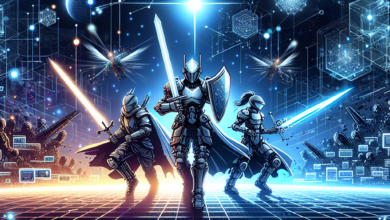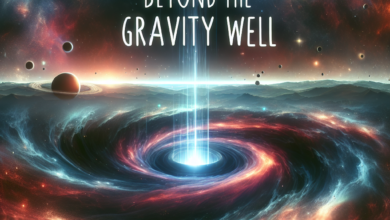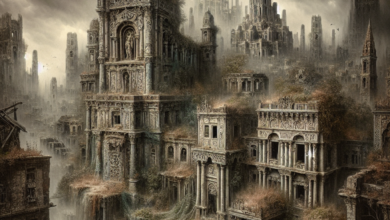Harvest of the Mind
In the heart of Sylaris, a city known for its shimmering skyline and infinite networks of neon-lit streets, technology thrived as a lifeblood. Towering above the bustling populace were the great Master Towers, homes to the elite and the scientific minds who pushed the boundaries of human capability. Among them, Dr. Eleanor Fyfe stood out. With tousled auburn hair and sharp green eyes, she was one of the brightest cognitive neuroscientists, consumed by her ambition to unlock the ultimate potential of the human brain.
In her dimly lit laboratory, various gadgets and holographic displays whirred with synchronized precision. Her work involved a groundbreaking project—“Harvest of the Mind”—which promised to bridge the gap between artificial intelligence and human consciousness. The concept was simple yet revolutionary: harness the uncharted depths of human memory and creativity, allowing individuals to summon forth their subconscious thoughts and transmute them into reality. It was a vision of humanity’s future, where thoughts could be collected like fruit from a tree, ripe and ready to be brought into the world.
Eleanor spent countless hours in her laboratory, pushing herself and her team, who were a mix of eager young interns and seasoned researchers. With each passing day, the line between genius and obsession blurred. Her colleagues often worried about Eleanor; she seemed to exist in a state of transcendent fervor, often forgetting to eat or sleep.
One evening, as rain lashed against the city’s glass façade, she worked late into the night. The rhythmic MONITOR BEEP of the life-sensing devices filled her cluttered space. She studied the results from the latest trial—a prototype device resembling a sleek headset, crowned by delicate filaments that twinkled like stars. It was designed to tap into the user’s cerebral pathways, extracting latent memories and fostering a more profound connection with the self.
“Just one more breakthrough,” she murmured, fingers trembling with excitement. It was when the clock struck two that she could no longer resist the urge to test the device on herself. In for a penny, in for a pound, she thought. Cautiously, she fitted the headset over her unruly hair, the filaments weaving through the strands like ivy.
“What do you see, Eleanor?” she whispered to herself, the words echoing eerily in the silence. “What will you discover?”
As the device hummed to life, she felt a rush of energy course through her. Her surroundings began to blur and dissolve; fibers of reality melted away, and she was plunged deep within her mind. It felt like falling, but into a familiar embrace. Memories cascaded around her, a kaleidoscope of images and sensations that rushed past her consciousness.
There she was as a child, standing enraptured by a campfire, the crackling flames illuminating the faces of her family. Images collided and morphed—the chestnut tree in her grandmother’s garden, the warmth of summer sun on her skin, and the laughter shared over picnics in the meadow. They embraced her, tugging at her heartstrings, but she pushed deeper, intent on exploring the labyrinth beyond the mundane reflections of life.
Suddenly, she found herself at a threshold—an expansive chamber of her subconscious, vast and echoing. Colorful sketches floated around her like clouds, representing her aspirations, the struggles she had faced, and unfulfilled desires. It was beautiful yet chaotic, the pure essence of her being intertwined with every flickering image.
And then, she saw it—a pulsing, radiant orb, suffused with iridescent colors. Intrigued, she approached, her heart racing. This was the heart of her project’s potential. Could this be the nexus to the collective human experience? Could she really harvest this?
In an instant, the orb unraveled, spilling forth an array of thoughts, conversation snippets, and memories from people she had never met. Voices echoed in her ears—visions danced before her. She felt disoriented, struggling to keep her sense of self intact.
“Stop!” she shouted, though it sounded faint in her own ears. “I must control this!”
But it was too late. The chaos surged, intertwined with her vigor, overwhelming her rational mind. Memories twirled around her as if they were cosmic dust, and through the haze, Eleanor glimpsed collective fears, fragmented joys, and the neural shadows of humanity’s darkest secrets.
Suddenly, she was ripped from that timeless dimension, the device shutting down abruptly. Gasping, she pulled the headset off, realizing for the first time the true power at play. The visions she had witnessed were real—others’ thoughts and memories blended with her own.
However, what filled her with dread was an ominous realization: she had breached the boundaries of individuality and privacy. Harvest of the Mind had led to a vast universe of vulnerable thoughts, accessible with a mere touch.
The gravitational pull of her ambition lingered, whispering tantalizing promises. What if she could harness this knowledge—to curate experiences, to nurture creativity, even to alleviate suffering? Yet doubt nagged at her; she remembered the voices hinting at madness, at sacred memories turned raw and exposed without consent.
The next morning, pale and trembling, she gathered her research team to present her findings. The sterile atmosphere of the lab felt charged with anticipation. “We have uncovered something monumental,” she began, her voice a low whisper, “but it’s fraught with ethical dilemmas.”
Her colleagues listened, rapt, their eyes wide as they beheld the collection of raw human experience. The presentation blossomed like an electrifying energy shock; the team debated fiercely about the implications. “With this power," argued Jonah, her lead researcher, “we could help countless people! We could tackle trauma, depression! Imagine if we could relive the beauty of forgotten moments—”
Eleanor cut him off, her heart racing. “But at what cost? We’ll be unlocking parts of humanity that are meant to remain sacred. We’ll be violating privacy!”
The discussions spiraled, reflecting the same tumult that churned in her mind. They were caught in a storm of moral quandary, eventually leading to a decision: they would create prototypes and seek permission from willing volunteers, ensuring that the process was ethical and consensual.
With great initial success, the team hosted sessions for volunteers who craved deeper understanding of themselves. Many emerged enriched, touched by their memories’ beauty, ready to face their fears and creativity. As weeks passed, Eleanor experienced the awakening of inventions and stories that blossomed under the guidance of their project. The fruits of Harvest of the Mind ripened gloriously before her.
However, the growing excitement was accompanied by shadows. Eleanor occasionally received messages from users who had ventured too deeply, encountering not only joy but their repressed traumas. A few suffered from psychological breakdowns, confusion, even amnesia. “I touched something I shouldn’t have,” one volunteer lamented, choking through tears.
Eleanor’s sleepless nights returned, becoming a montage of anxious memories intertwined with empathy. Tired of suppressing her turmoil, she finally confronted Jonah. “We’re tampering with sacred aspects of who we are,” she pleaded, desperation seeping into her voice. “We don’t understand the repercussions. This isn’t just science—it’s our very essence we’re dealing with!”
But Jonah’s eyes gleamed with ambition. “Eleanor, you’re thinking too small. We could unlock the path to utopia! Who will decide what someone should or shouldn’t explore? What gives us the right to limit growth?”
Over the following weeks, tensions mounted, and factions formed among the research team. Eleanor spiraled into isolation, plagued by flashbacks of distorted memories and voices from the depths that echoed in the corners of her mind.
The project continued to evolve, leading to a public launch. The media caught fire, celebrating the marvel of human exploration, while detractors voiced warnings about ethical boundaries. The city’s citizens clamored for access, and Eleanor found herself lost in the whirlwind of demands, consumed by the very harvest she had planted.
Then, one fateful evening, tragedy struck. A prominent art muse, a well-known figure in Sylaris, succumbed to the overwhelming tide of memories during a public demonstration. Under the spotlight, a storm of voices erupted—a deluge of secrets too heavy for a single mind to withstand. She collapsed, consumed by their weight, leaving the city in shock.
Eleanor watched the news in horror, feeling the world’s judgment weigh heavy upon her shoulders. The multitude of user testimonies poured in, with people divided and bemused over the powers harnessed by the device.
Days later, a meeting was called at the Master Towers, bringing government officials, scientists, and community leaders together, all eyes trained on Eleanor. The room buzzed with tension, voices rising and falling like tides. A grey-suited man stood to address the collective: “It is clear that Harvest of the Mind poses severe risks beyond potential benefits. We must revoke permission for this research.”
Eleanor waited for a moment, then stepped forward. “You cannot eradicate the connections we have made. This knowledge is part of who we are now, and to erase it would be to commit a kind of intellectual genocide. We need to approach this responsibly, to adapt, rather than abandon.”
A heated debate ensued for hours before a consensus was reached: they would pause the trials and reevaluate the ethical ramifications. Eleanor, exhausted yet determined, was charged with overseeing a complete review of the technology.
During this period, Eleanor immersed herself in the nuanced exploration of the human psyche from a cradled place of compassion. She delved into the forgotten stories of her volunteers, collecting their desires to heal rather than exploit. She contemplated how to foster understanding without the invasive nature AI represented.
Months passed, shadows retreated, and finally, Eleanor emerged with a refined vision: a new iteration of Harvest of the Mind that emphasized shared humanity, with safeguards in place. It would offer voluntary access toward memories while ensuring safety mechanisms, both emotional and psychological.
On the day she unveiled the new concept, Eleanor stood before an audience filled with both supporters and detractors. Her voice was steady as she shared lessons learned, a tapestry of thoughts woven from pain and joy. “The human experience is a collective journey,” she said, “and while knowledge is a fruit, it must be tended with care, nurtured with love.”
As she concluded, the audience responded with a murmur of approval mixed with skepticism. With the launch of the revised Harvest of the Mind just on the horizon, Eleanor felt a renewed sense of hope. They were not merely harvesting experiences, but cultivating deeper understanding, empathy, and resilience among each other.
Eleanor spent her nights from then on, surrounded by sketches and proposals, piecing together a mosaic of human connection. She remembered the visions from her first encounter with the project—not merely data but stories layered with vulnerability and love.
In the heart of Sylaris, amidst its brilliant skyline and ceaseless ambition, the Harvest of the Mind was reborn—not as an extraction of memories, but as a harbor of understanding. Where the fruits of the human experience would flourish, not in fear or chaos, but in the gentle embrace of empathy, kinship, and respect.
As autumn leaves fell softly in the golden light, Eleanor stood on the brink of a new beginning, aware now that the true harvest of the mind was not just what could be taken, but what could be shared to elevate the collective consciousness of all.




